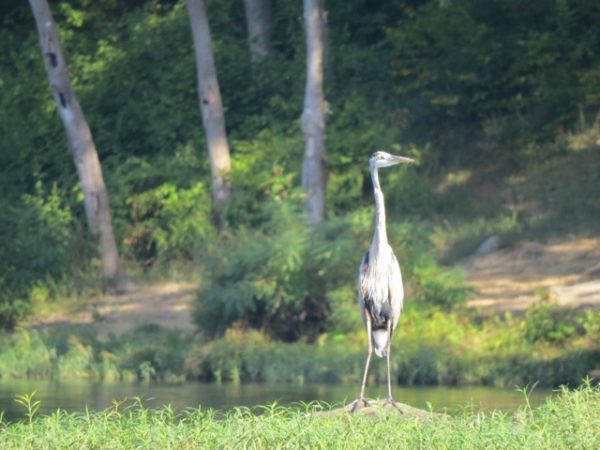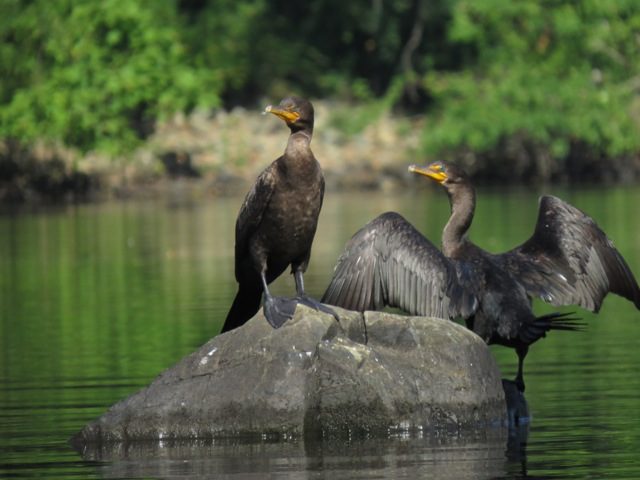Apps for better birding, serious star gazing

These days it seems as if there is an app for everything. Besides a whole host of social media options including Facebook and Instagram, and nearly every game you can imagine, you can monitor your diet, map your run, track your finances, read a book, and even find the closest – and cleanest – public restrooms.
A lot of field biologists are getting into the app craze, and I’m far from the most technologically advanced among them, but there are a few I find myself using frequently on my iPhone or iPad when I’m in the field.
Two apps I use for birding are called iBird pro and Birdsnap. The iBird pro is the app I use when I’m out in the woods or on the water and want to look up a bird I just spotted to make sure I’m correct in my identification. The app allows users to select features such as shape, size, color, location observed and flight pattern to narrow your search to a set of the few possible birds that match. In addition, you can select specific birds and see images and a range map, read descriptions of their physical characteristics and behavior.
The iBird pro app also has recordings of the individual birdsongs. Ornithologists use apps like this one to call birds in for a closer look, or to catch and band them when doing research. Male birds are territorial during nesting season, and they think the call being played is another male challenging them for their turf, so they fly in to investigate. This can disturb birds during nesting season though, so biologists don’t do these playbacks for very long. The iBird pro app is offered by the Mitch Waite Group and is about $20, but it is only one of several options for birding, so you can read reviews and decide which one would be the best for you.
Birdsnap is an app I find myself using more when I’m back home and have gotten a good picture of a bird and want to confirm the identification. Researchers from Columbia University, the University of Maryland and the Smithsonian Institution developed this app, and it uses visual recognition to identify birds. Based on your location and time of year, it narrows the birds to a set that are expected to be in your area. You can either take a picture of a bird or upload an image from your pictures on your device, and then the app asks you to tap on the eye and then the tail, and it scans over the bird and gives you a possible ID, sometimes one bird and sometimes a list of a few possible birds.
Most recently, I was paddling at Narrows Reservoir in Albemarle and spotted a few cormorants. I’d often heard these were double-crested cormorants, but was unsure. When I got home, I checked it with Birdsnap and got a positive ID. One of the birds was drying its wings, and as I learned from this app, cormorants don’t have waterproof feathers, which explains this interesting behavior.  The one limitation to Birdsnap is that you do have to get a clear picture of the bird, which can be hard to do. Thanks to a grant from the Norcross Wildlife Fund, I was able to purchase a work camera with a 50x optical zoom that has made it possible for me to get some good bird images that work with this app.
The one limitation to Birdsnap is that you do have to get a clear picture of the bird, which can be hard to do. Thanks to a grant from the Norcross Wildlife Fund, I was able to purchase a work camera with a 50x optical zoom that has made it possible for me to get some good bird images that work with this app.
Sometimes simply having the Internet at your fingertips is a useful field tool where service is available. I was out with some of my botanist friends recently, and we were trying to find a specific rare plant one of them had identified during a recent Carolina Vegetation Survey (CVS). Using the CVS website on my phone, I could find the plots – there were several in the area, but the biologist remembered the specific forest type, which allowed me to narrow the search to one plot. Then using the Google map app, which showed our location as a blue dot that moved with us, I could switch back and forth between the map on the CVS website and Google maps, and navigate us to the spot.
Another app I have recently downloaded is called Soilweb. It is a very simple to use app – you just tap “Get my Location” and it gives you a breakdown of the soil types underneath the approximate location where you’re standing. The California Soil Resource Lab at UC Davis developed this app in partnership with the U.S. Department of Agriculture Natural Resource Conservation Service.
These are just a few of the apps I’ve found handy when I’m out in the woods for field work. I know there are many others equally useful. I just recently downloaded Star Walk by Vito Technology and am anxious to try it – it is an interactive astronomy guide that lets you see the stars and planets and moon in the correct location where you are, as well as identify constellations that you photograph. It comes with great reviews, and I’m looking forward to exploring it next time I’m camping. Our clear skies should present the perfect opportunity. Although I typically prefer to limit my use of technology when I’m enjoying the outdoors, it is a treat to have all these learning tools right at your fingertips.